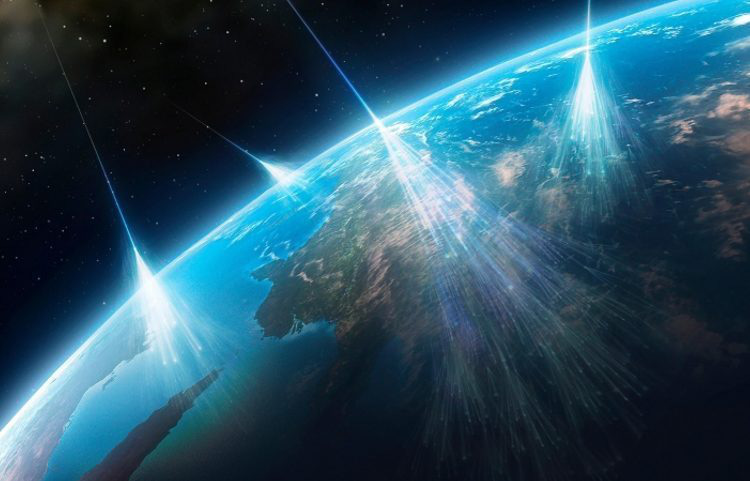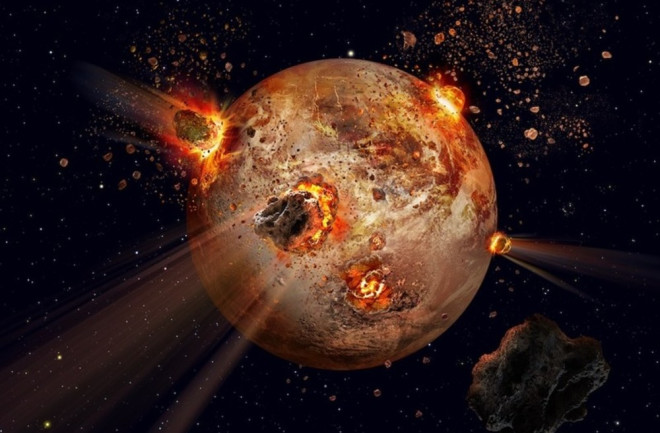New research by American scientists shows that if existing on planets like Mars, alien creatures could live on energy from cosmic rays.
Organisms that rely on cosmic rays could thrive on planets floating in intergalactic space and not orbiting any stars, said researcher Dimitra Atri at the Blue Marble Space Science Institute in New York. Seattle, USA, concluded in a report published on October 5 in the journal Royal Society Interface.
“When radiation reaches the water layer that may exist below the surface of Mars or Jupiter’s moon Europa, it will trigger chemical reactions that living organisms can use,” Live Science quoted Atri as saying. .

Life on Earth relies largely on energy from the Sun. Light promotes photosynthesis, directly or indirectly providing nutrients for most living organisms. However, without light, living organisms can seek other sources of energy such as heat, chemical energy and even ionizing radiation.
For example, the bacterium Candidatus Desulforudis audaxviator, found at a depth of 1.8 miles beneath a gold mine in South Africa, survives on energy from radioactive isotopes of uranium, thorium and potassium in the rock. Ionizing radiation from these isotopes breaks down water in the area into hydrogen gas, which bacteria use as fuel to produce other useful molecules.
“Most research on ionizing radiation concerns potential harmful effects such as DNA damage,” Atri said. “But bacteria that live completely isolated from sunlight and the biosphere can survive on ionizing radiation.”

Atri studies galactic cosmic rays, including high-energy particles such as protons, that penetrate space from beyond the solar system. After learning about Ca. D. audaxviator, Atri wondered whether other bacteria could survive on energy from cosmic rays.
Cosmic rays possess much higher energy than radioactive sources on Earth. When projected into a planet’s atmosphere or surface, they emit a series of particles such as electrons, positrons and neutrons along with dangerous gamma rays. “Cosmic rays are everywhere, and they contain a lot of energy, and can even penetrate below the planet’s surface,” Atri said.
Using computer simulations, Atri discovered that cosmic rays could provide a stable energy source for life underground. This energy is quite similar to the source produced from radioactive substances on Earth. The flow of energy can also sustain other potential life forms.

Atri is planning to let the bacteria Ca. D. audaxviator was exposed to particles produced by cosmic rays in the laboratory to prove its hypothesis.
Cosmic rays are a shower-shaped phenomenon of high-energy particles, including X-rays, that continuously affect the Earth and are produced by the explosion of stars and black holes. pillar.
Cosmic rays are not the same as visible light rays transmitted from the universe, they are a type of ray that cannot be seen by the human eye.
Before entering the earth’s atmosphere, these cosmic rays are called primordial cosmic rays. They are composed of particles of atomic nuclei of various elements, of which mainly hydrogen nuclei are estimated to account for about 87%; Next is the Helium nucleus, estimated at about 12%; There are also atomic nuclei of oxygen, nitrogen, tin, cobalt, alkali, carbon, lithium, barium, boron; There are even people looking for atomic nuclei with extremely small concentrations.

Primordial cosmic ray nuclei, their average energy is much greater than that of photons, their speed and the speed of light are almost the same. They come to the ground from all directions, over an area of 1 cm2 next to the earth’s atmosphere, every second a primordial cosmic ray particle penetrates.
After the primitive cosmic ray particle entered the earth’s atmosphere, it encountered atomic particles in the air, producing elementary particles such as electric charge, positive charge, photons, mesons, and ultraviolet particles. . . destroys a lot of energy, this is turned into secondary cosmic rays.
Today, most scientists believe that early cosmic rays were formed in our Milky Way system. Neutron stars and magnetars, which have strong and fast magnetic fields, and supernova outbreaks, can all be sources of early cosmic ray particles.





